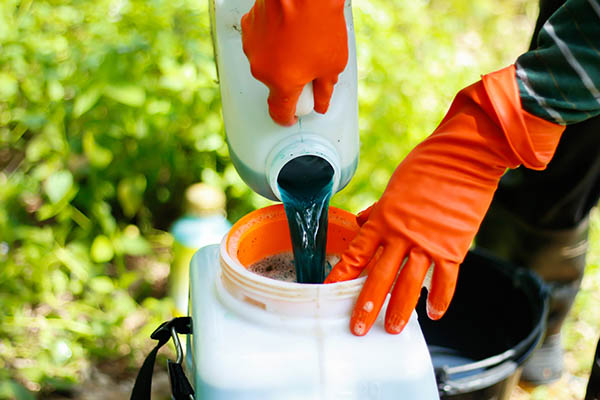Product subject to EU regulation 2016/425 PPE Category III, requires the issuance of a report after the annual production control (Module C2) done by CTC.
PPE testing and compliance for protection against chemicals
| The objective of these standards is the health and safety of operators who are called upon to handle or be in the presence of chemicals.Professionals can be put at risk by exposure of the skin to these chemicals. |
For chemical protection, CTC uses the following test methods:
- EN 13832-1: Test methods to determine resistance of footwear to chemicals. Contact conditions: projection, degradation and permeation.
- ISO 6530: Specifies a test method for the measurement of indices of penetration, absorption and repellency for protective clothing materials against liquid chemicals, mainly chemicals of low volatility.
- EN 16523-1: Determination of material resistance to permeation by chemicals. Permeation by potentially hazardous liquid chemicals under conditions of continuous contact.
- EN ISO 374-2: Specifies a test method for the penetration resistance of gloves that protect against dangerous chemicals and/or micro-organisms.
- EN ISO 374–4: Specifies the test method for the determination of the resistance of protective glove materials to degradation by dangerous chemicals with continuous contact.
To Declare compliance, CTC relies on requirement standards:
- EN 374–1: Protective gloves against dangerous chemicals and micro-organisms: terminology and performance requirements for chemical risks.
- EN 14325: Protective clothing against chemicals. Test methods and performance classification of chemical protective clothing materials, seams, joins and assemblages.
- EN 13832–2: Footwear protecting against chemicals: requirements for limited contact with chemicals
- EN 13832–3: Footwear protecting against chemicals: requirements for prolonged contact with chemicals

PPE for protection against chemicals and dedicated to agriculture
PPE dedicated to agriculture testing and compliance
| The objective of the standard is the health and safety of farmers who handle pesticides. Professionals can be put at risk by exposure of the skin to these chemicals. |
CTC uses 3 test methods to assess the performance of PPE:
- ISO 22608: Measurement of repellency, retention, and penetration of liquid pesticide formulations through protective clothing materials.
- EN ISO 19918: Laboratory test methods to determine the resistance of materials, closures, and seams used in personal protective equipment (PPE) to permeation by solid or liquid chemicals with low vapour pressure (less than 133,322 Pa at 25 °C) and/or insolubility in water or other liquids commonly used as collection media.
- EN 16523-1: Determines the resistance of materials to chemical permeation.
To Declare compliance, CTC relies on requirement below standards:
- ISO 18889: Protective gloves for pesticide operators. Establishes minimum performance, classification, and labelling requirements for gloves worn by operators and re-entry workers handling pesticide products to protect the hands or hands and forearms against contact with those products.
- ISO 27065: Performance requirements for protective clothing worn by operators applying pesticides. Establishes minimum performance, classification, and marking requirements for protective clothing worn by operators handling pesticide products.


